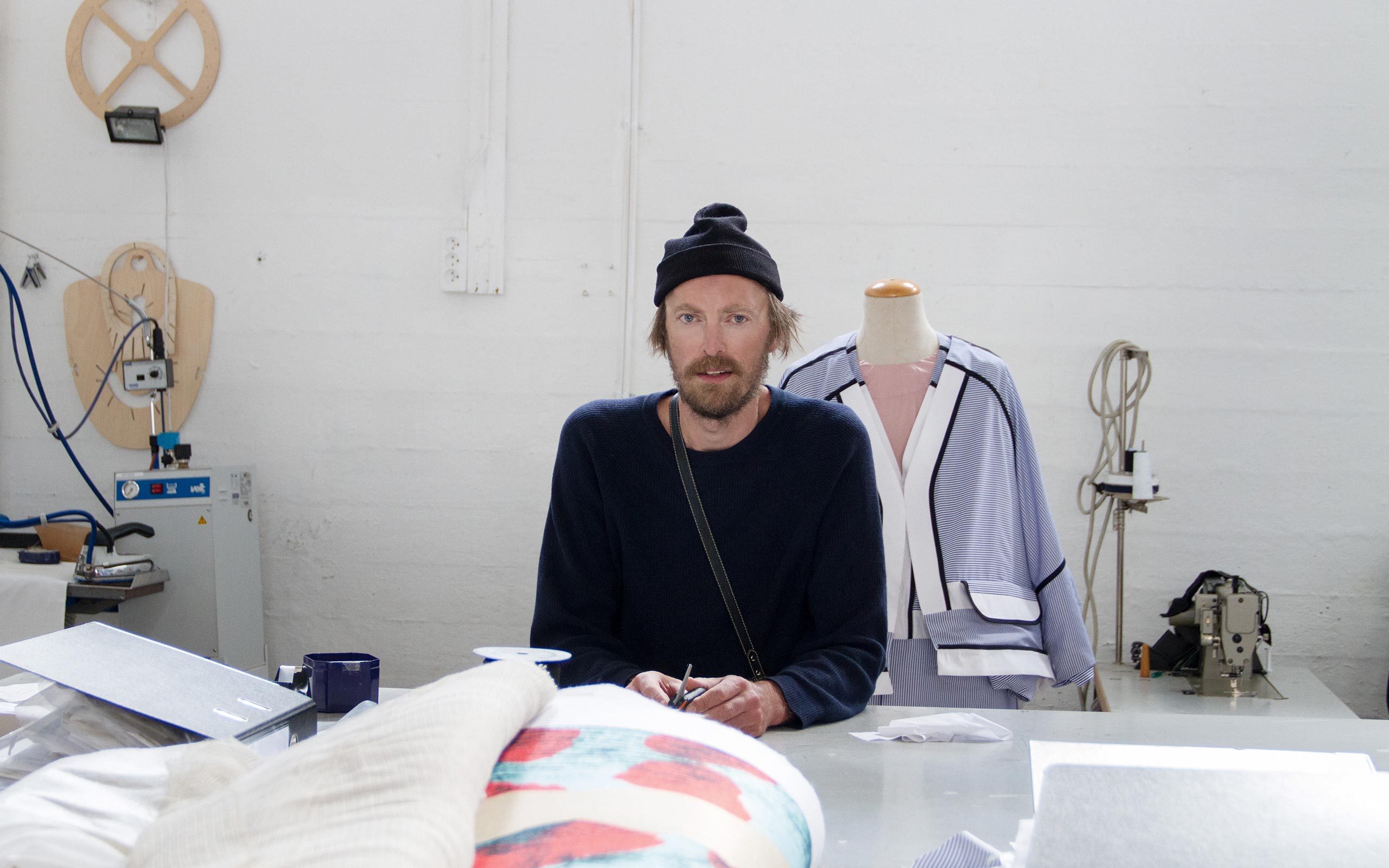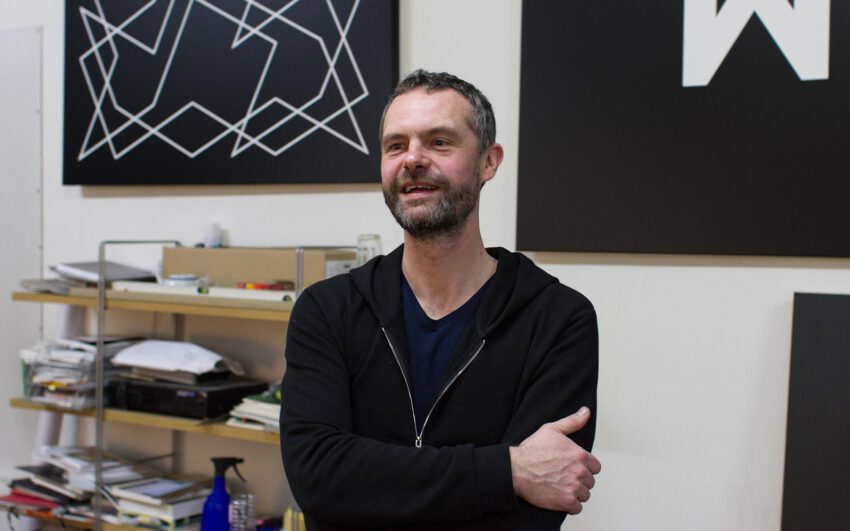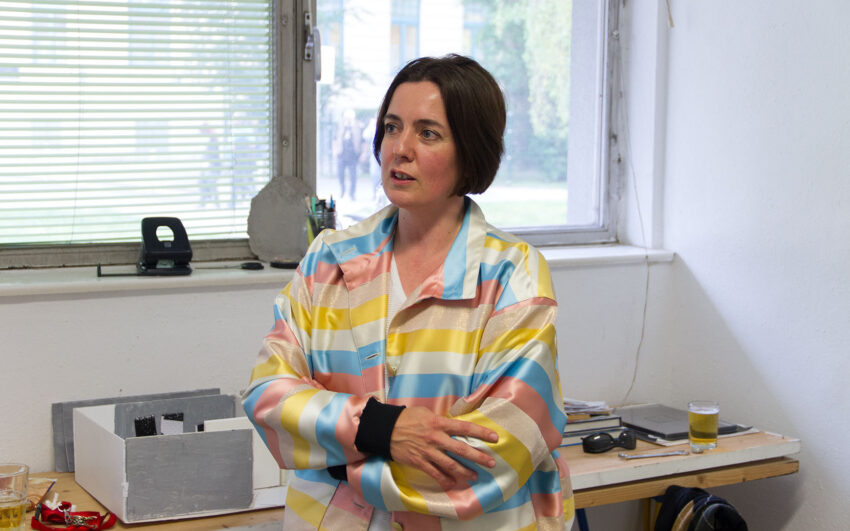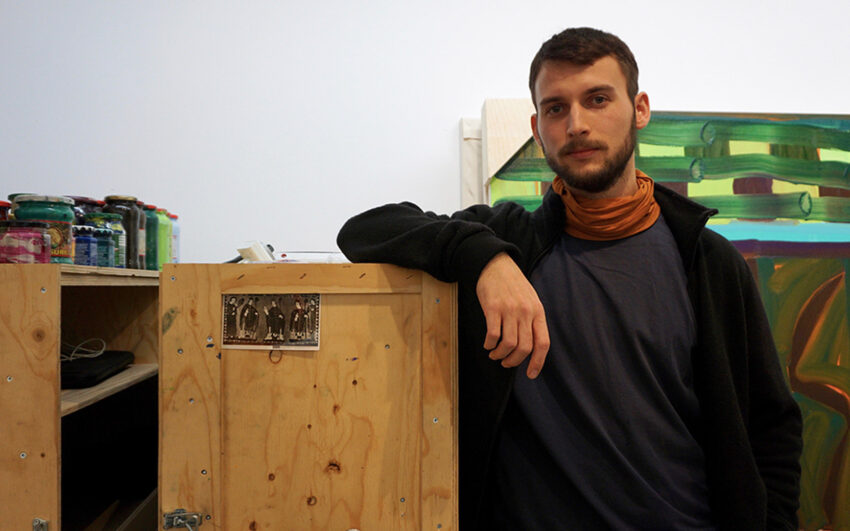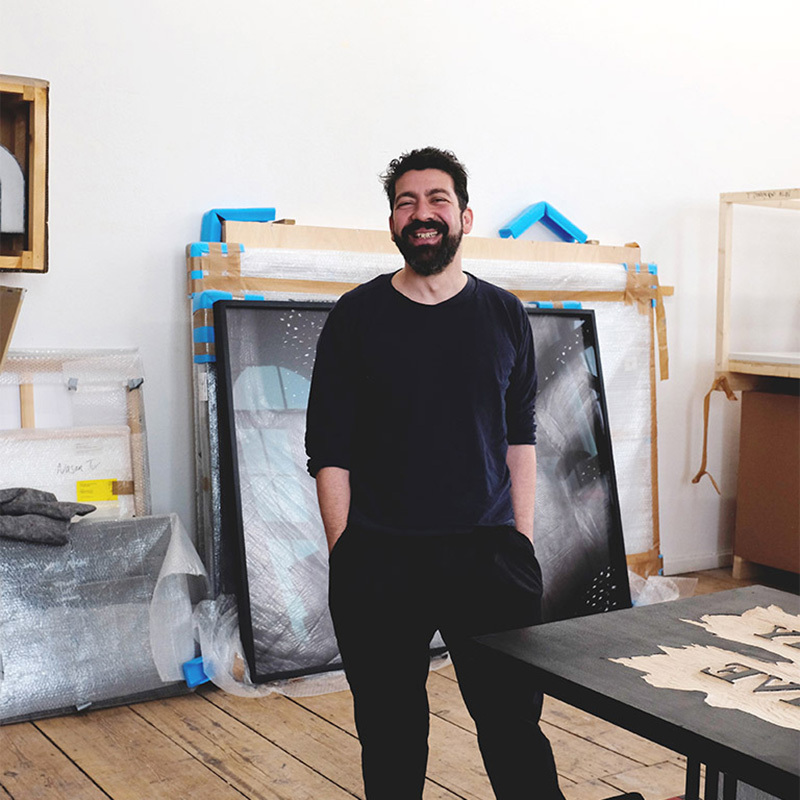The scene for contemporary art in Europe’s North is expanding and developing new dynamics as international collectors are watching the scene. With Nordic Notes we regularly cast the eye on the Nordic art and cultural scene, portraying its important actors.
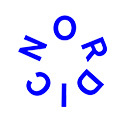
The name Henrik Vibskov may be most commonly associated with the avant-gardist fashion label, but also brings to mind a multitude of twisted universes, created around each of his collections. His creative urge hardly follows along specific paths, which makes his work hard to describe and to pin down. We met Henrik in his studio, located by the canals of Copenhagen’s trendy neighborhood of Christianshavn, where he tells us, among others, about the boundaries between art and fashion, what he enjoys about jumping between the creative disciplines, and about his obsession with salami.
Henrik, you are someone who divides his creative energy across a wide range of disciplines. What would you tell someone sitting next to you on a flight, asking you what you do for a living?
That depends on the duration of the flight. (laughs) Sometimes I opt for the easiest way. That is to say that I play music, then I don't have to explain and get into the details of things. Starting with fashion often turns people a little off, which is okay. It really depends on the person. But it can end up in a long story, with all its layers, in which case I would say that I work in different creative fields and do many, quite different things – theater, fashion, music, costumes, art projects and small performances, and teaching.
It sounds like these different fields are in no way competing or in conflict with one another. Moreover, you seem to be switching between them without much effort.
That’s true. I don’t stress myself out about things. Most of the time, I’m just trying to be in the moment using my senses. From there an idea will seek to express itself in which form ever. I could certainly focus completely on one thing only, I actually tried that once. I was trying to put all my other projects aside and focus just on fashion for three or four months. I found out it didn’t generate the productive force I had expected. Personally, I’m getting a lot out of working on different things simultaneously. Letting ideas bounce around and take them to new areas often resulted in better ideas and new concepts.
Is this how it came about that a salami factory all of a sudden popped up in one of your Paris fashion shows?
Yes, exactly. The idea of the salami actually came from a project we had done for the Art Cologne, a tapestry with food patterns. And one night I suddenly woke up thinking, “Hey, what about doing something with salami for the fashion show as well.” The idea was to have this salami factory. I wanted it to be somewhat futuristic and surreal, with neon lights and elements of old sci-fi movies where you land on the street level among futuristic skyscrapers with your jet car as in Blade Runner, entering that world of darkness. Everything is a bit gloomy and surreal. Usually it is raining. And there are always some Asian food trucks. The Paris show was very Asian, but contrary to the Asian food trucks, we had this European Delikatessen thing going on.
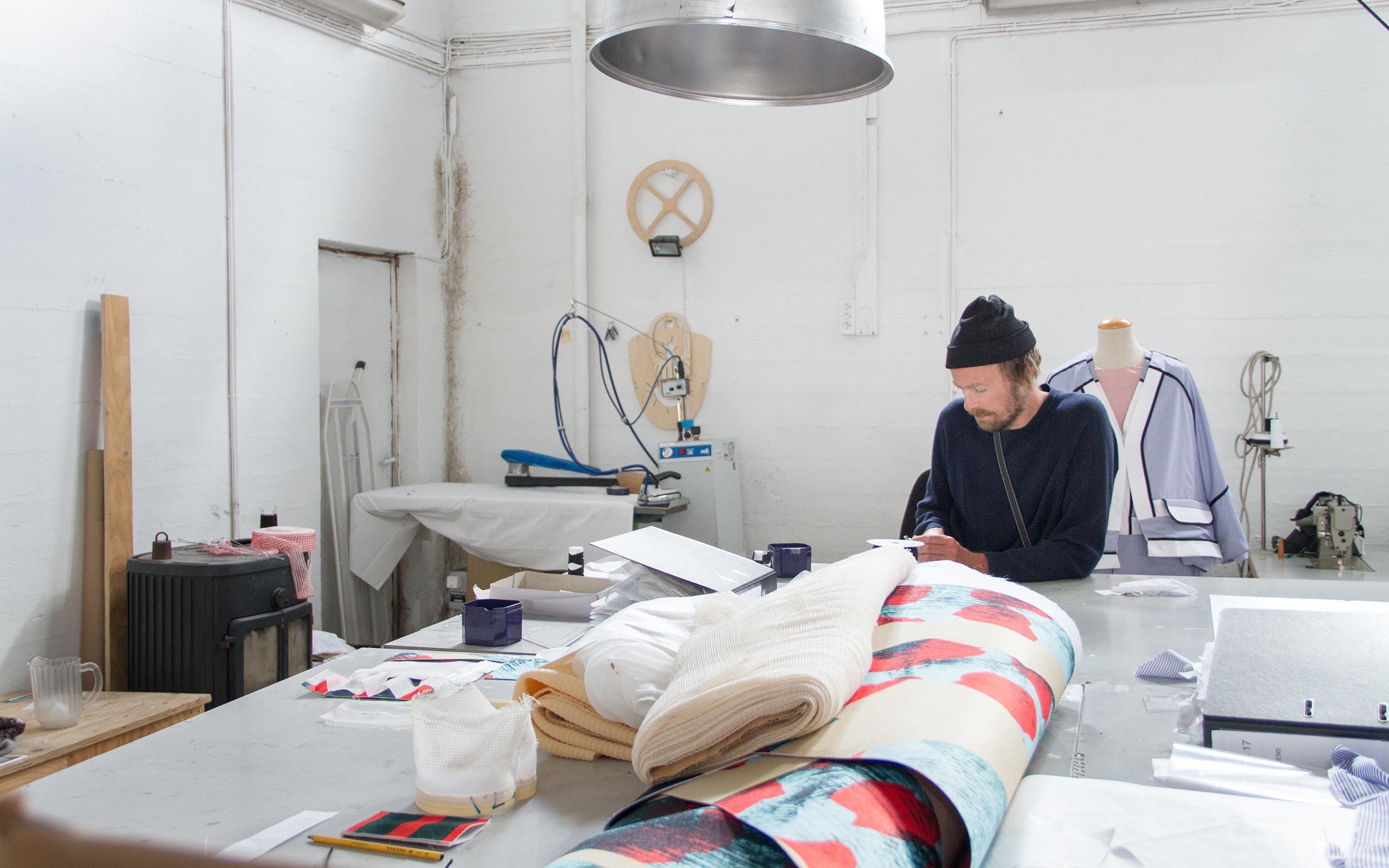
You always had an inclination to feature food in your work, not just salami, but also passion fruit and all kinds of other food. Where does this fascination come from?
Yeah, I've been doing foodstuff quite a lot. It's always good to have some food involved in our collection. We have small samples every season, and I always tell my team, “We need a fruit, a pineapple, something!” From an aesthetic perspective, there are some pretty funky fruits you wouldn’t expect that they exist. They can give quite a different spin to a project in terms of their shape, their color, or their silhouette. It’s not even so far-fetched if you think about it. Grapes and other fruits have always played a big role in art history. Food is also an expression of the diversity of our global society in terms of access to food and how we relate to it. In the rich world we can afford to get all nerdy about food whereas in other parts of the world people are starving.
But why salami?
I think with the salami I was kind of looking back at my own history and culture, because Danish salami was once quite a big thing. In the 1980s and ‘90s there was this fat motherfucker of a salami, which was extremely artificially red and white. It was called three stars Danish salami, which was involuntarily ironic, as it was super low quality. Back then, everyone was of course "woah". When my dad turned 80, my mum and he bought some foodstuff among them this three star salami and my girlfriend was like, “Hey, the kids can't eat that, it's full of E-numbers and stuff.” (laughs) For Paris we had some organic salami made by the best butcher in Denmark. Initially I was thinking about selling that salami under the Vibskov label. But, perhaps not really unexpectedly, it turned out super complicated to ship salami. We had ordered way too much in the first batch. So now we have our fridge full of it! And more of it is going to arrive. A bit of a salami problem at the moment!
Pigs are another motif, which turns up in a lot of things you do. Why is that?
Our family had a pig farm. I didn’t grow up there, but my dad did. So my grandparents were fully piggy, my dad is fully piggy – and maybe I am fifty percent piggy. You know, bacon has a big history, it is very popular in various cultures, and of course it plays a role in religious beliefs. When I was doing my graduation I knew I had to stand out from these 400 some students who were graduating with me. At the time, the food-and-mouth disease among pigs and cows was the big topic in Britain. So instead of bringing a case with a portfolio, I decided to do a fashion collection based on pigs. I even brought in a pig for the presentation. In the meantime we founded the P.I.G Foundation, which holds a series of non-profit cultural events, concerts, workshops, and talks. We also give out an annual award that provides financial support to outstanding creative talents, selected from all creative fields. We call them (P)ractical (I)ntelligent (G)eniuses.
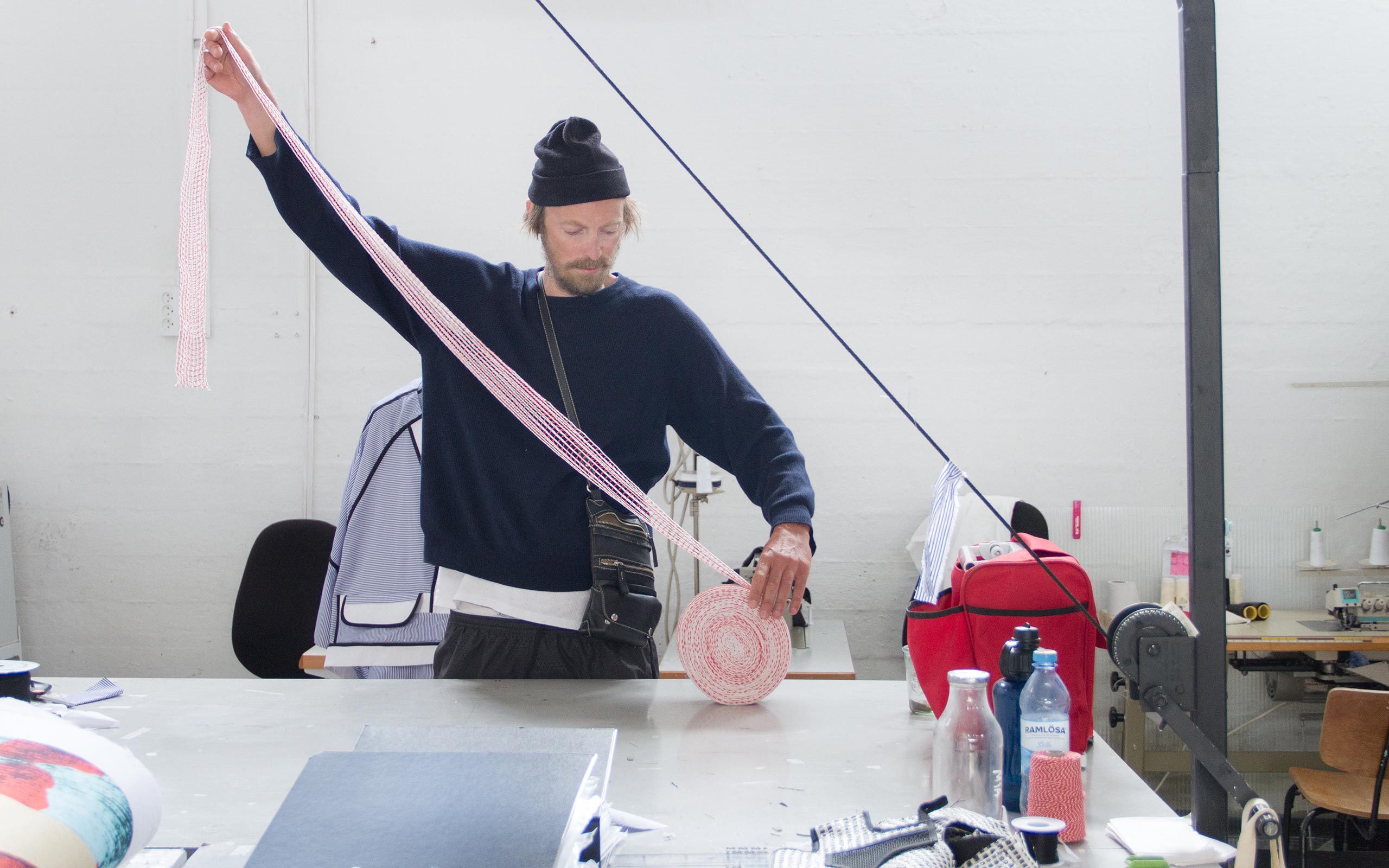
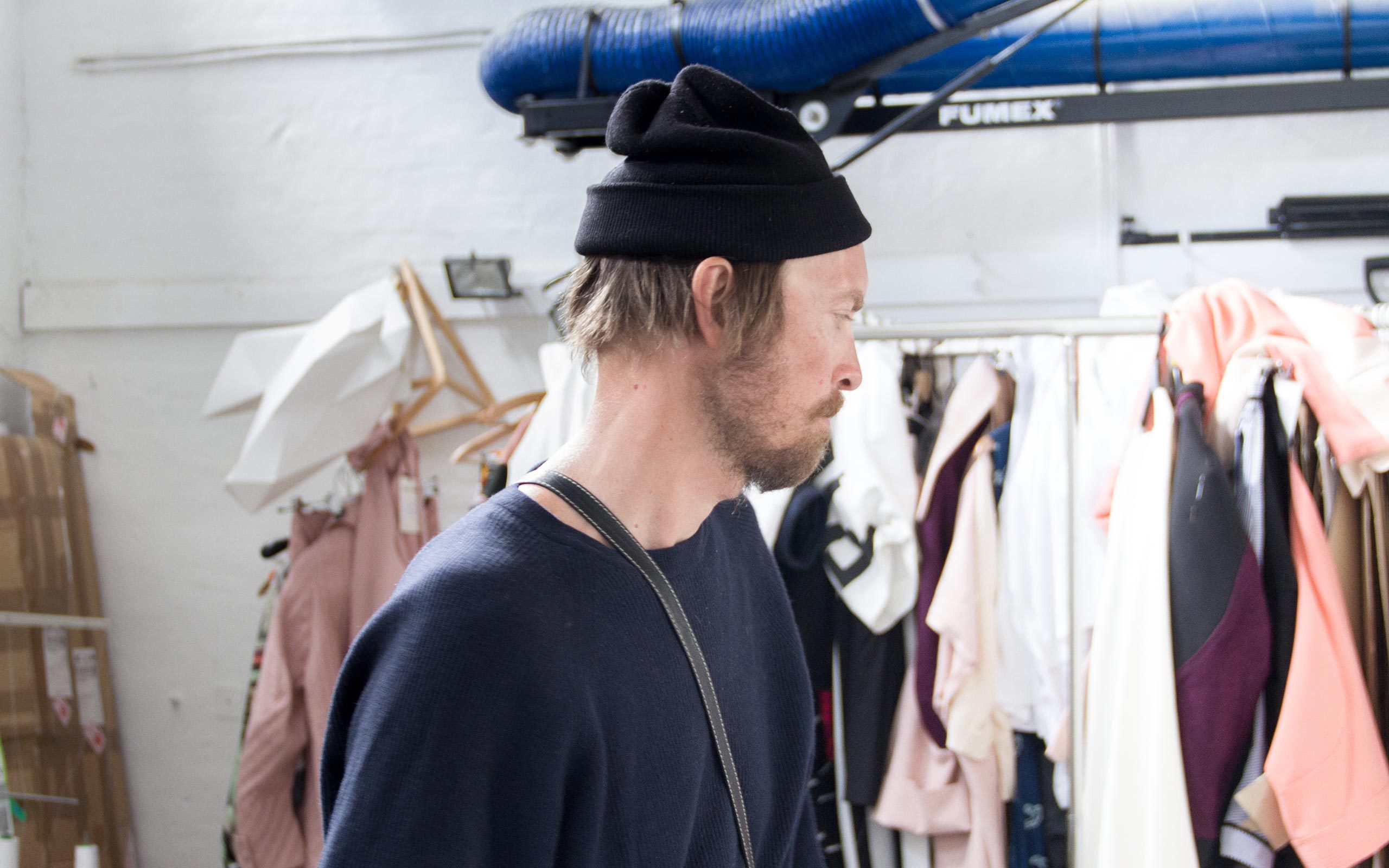
You were talking about your fascination with sci-fi movies. Do you like to spend time thinking about the future?
I would typically say that the future is more important for my work than history, but at second thought I feel it is really the combination of both. I have always liked sci-fi movies and such stuff – not when they are too violent or advanced with robots and all that. I like if sci-fi movies have a little bit of realness, but also something strangely futuristic and surreal, with different cultures blending.
In all the projects we've done throughout the years, we’ve always created different societies of men and women who live in particular worlds. We had this show called The Last Pier of Pandemonium, which was quite post-apocalyptic, a bit like Mad Max Beyond Thunderdome, where you have kids stranded in a hole in the desert who encounter other kids which have been out there for years and have created their own society. A lost society…
Do you have any heroes? Someone you admire, or from whom you are getting inspiration?
Oh yes, there are a lot of people I admire who create beautiful and intelligent things, in all kinds of fields. I couldn’t name anyone specific off the top of my head. On the other hand, I have never been the guy who had big posters hanging on the wall as a kid. During a short period, I had a few because it seemed what everybody else my age was doing. But that didn’t compare to any of my friends who were super into it.
You are often described as being one of the movers and shakers of the “New Nordic” movement. Do you associate yourself with the Nordic creative scene?
I actually hate that term "Nordic Cool" or whatever it's called. I also hate when people call me a modern-day Renaissance man, which happens a lot. I am not even sure what they mean by it. Of course I can’t deny the fact that I am a Scandi, based on my culture and upbringing in Denmark. But I have been to a school with forty different nationalities and cultures. If there has ever been any typical Danish trait in me then it has already been washed out. We speak English in the office and only a few people on the “Team Vibs” are actually Danish.
If you don’t consider yourself a part of the Nordic scene, you might just as well operate from London, Paris, or Berlin. Why Copenhagen?
I have actually been to London trying out different things. But honestly, I wasn't one hundred percent sure what to do there, I was broke and hungry and thought perhaps it was time to pull out of London. Copenhagen is my base. It’s were I come from. It’s my home. And we are a great community here at the harbor in Christianshavn.
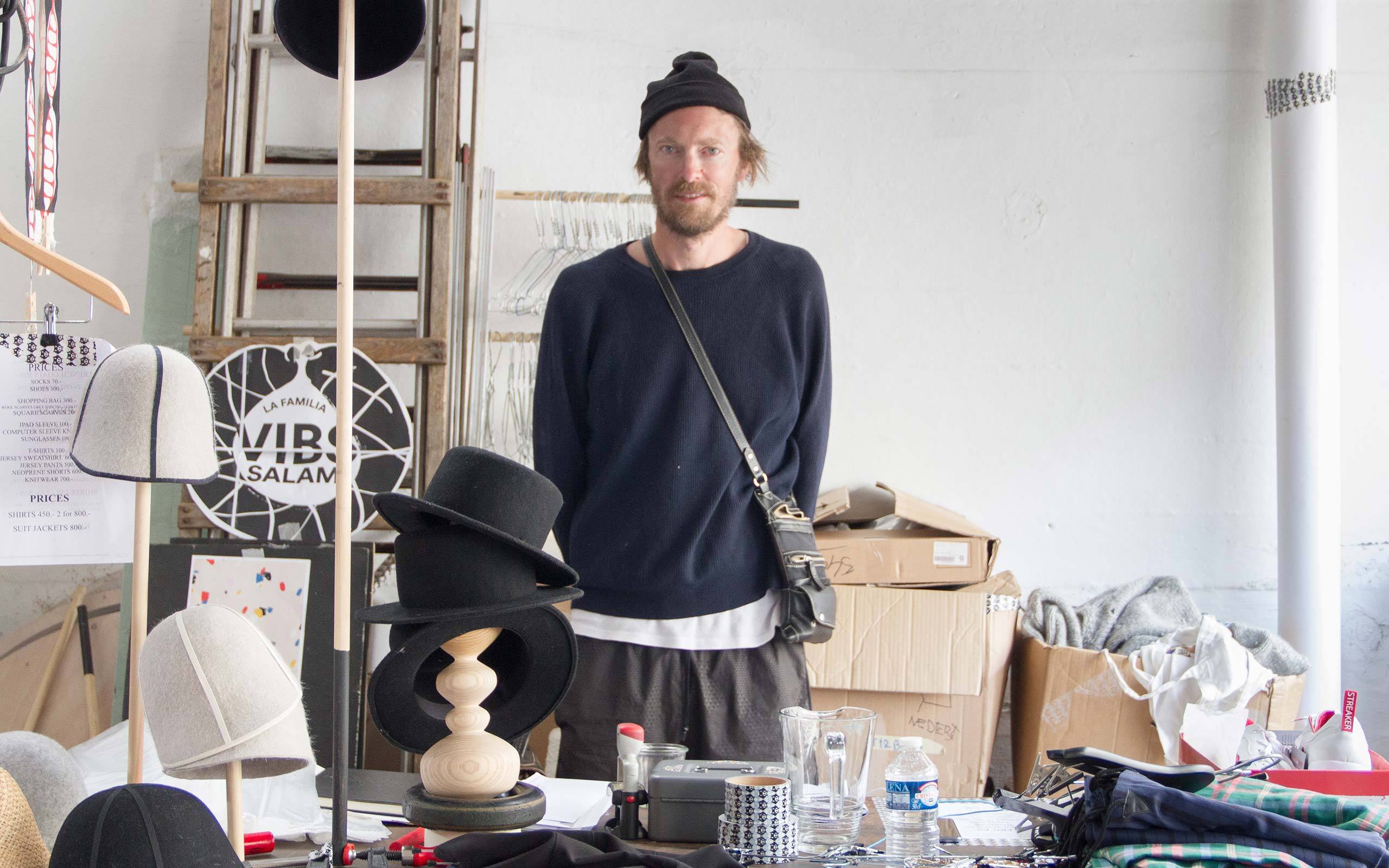
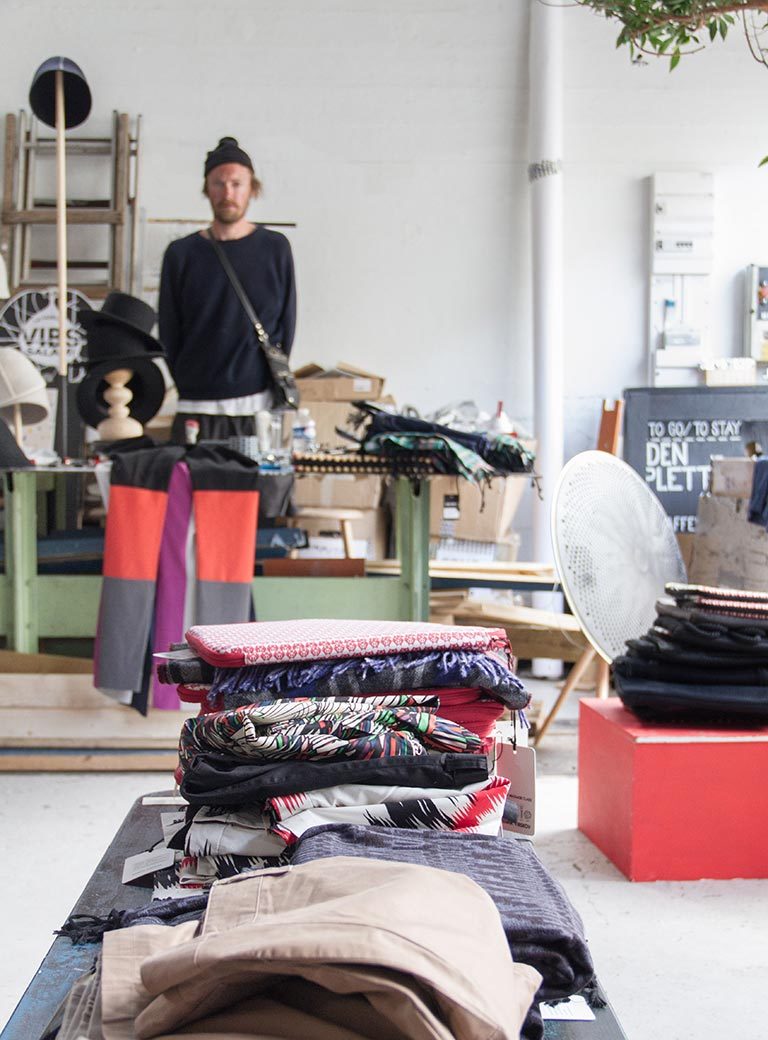
Your exhibition Tempo at Kulturhuset Stadsteatern in Stockholm where a lot of works that had originally been created for fashion shows were shown has just closed. Do you consider fashion in itself art?
No, I don’t think fashion in itself is art. But I think all the creative fields and the crossover disciplines benefit from and even need each other. Matthew Barney for example created identities in his movies, which are very costume-based, you could say, fashion-based. You can also observe fashion designers experimenting with paint and ink, trying to do stuff which may become something unique. Or think about the music industry. Concerts without exciting set designs and a visual scenography would be quite boring. The audience has a role to play as well. That’s why it is so important to include diversity in my work. You don’t want your work to just be received by a bunch of journalists. Maybe you also need some drunken students in your show, and some families!
Is there something you think would be really cool to work on, if you got the chance to do it one day?
I think it would be awesome to work more with buildings and interiors. Architecture could be an interesting field, as it will hopefully stay around for longer than me.
What do you want people to understand about the work you do?
My works are perhaps very surreal, but I am trying to make them understandable. I hope people will recognize some kind of craftsmanship, and hopefully some form of conceptual imagination. In general the diversity of my work is very difficult for people to grab. I think it can be very difficult to classify in conventional terms and a gallery must have a hard time explaining it. I don't really call myself an artist, either. I think it's such a fluffy word and I met so many people in the big cities where many people call themselves artist only to compensate for the fact that are just a bit lost. They hide behind the word. When I meet people who pull of this “hey, I am an artist” thing I usually pull back. I don't try to have the final word on what I am or should be. There is this German word Gesamtkunstwerk which I am trying to think about and focus on doing. And I am feeling pretty productive that way.
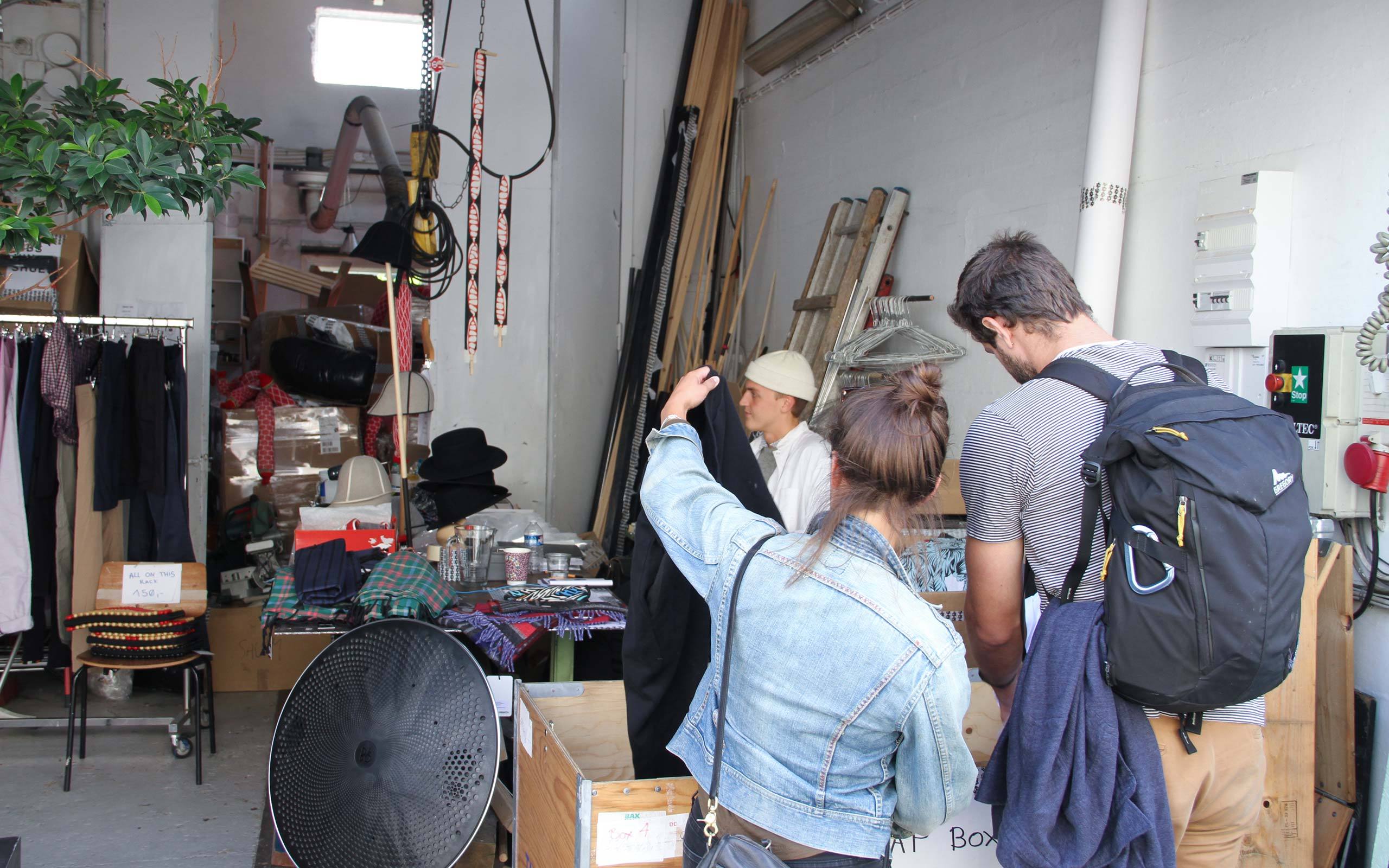
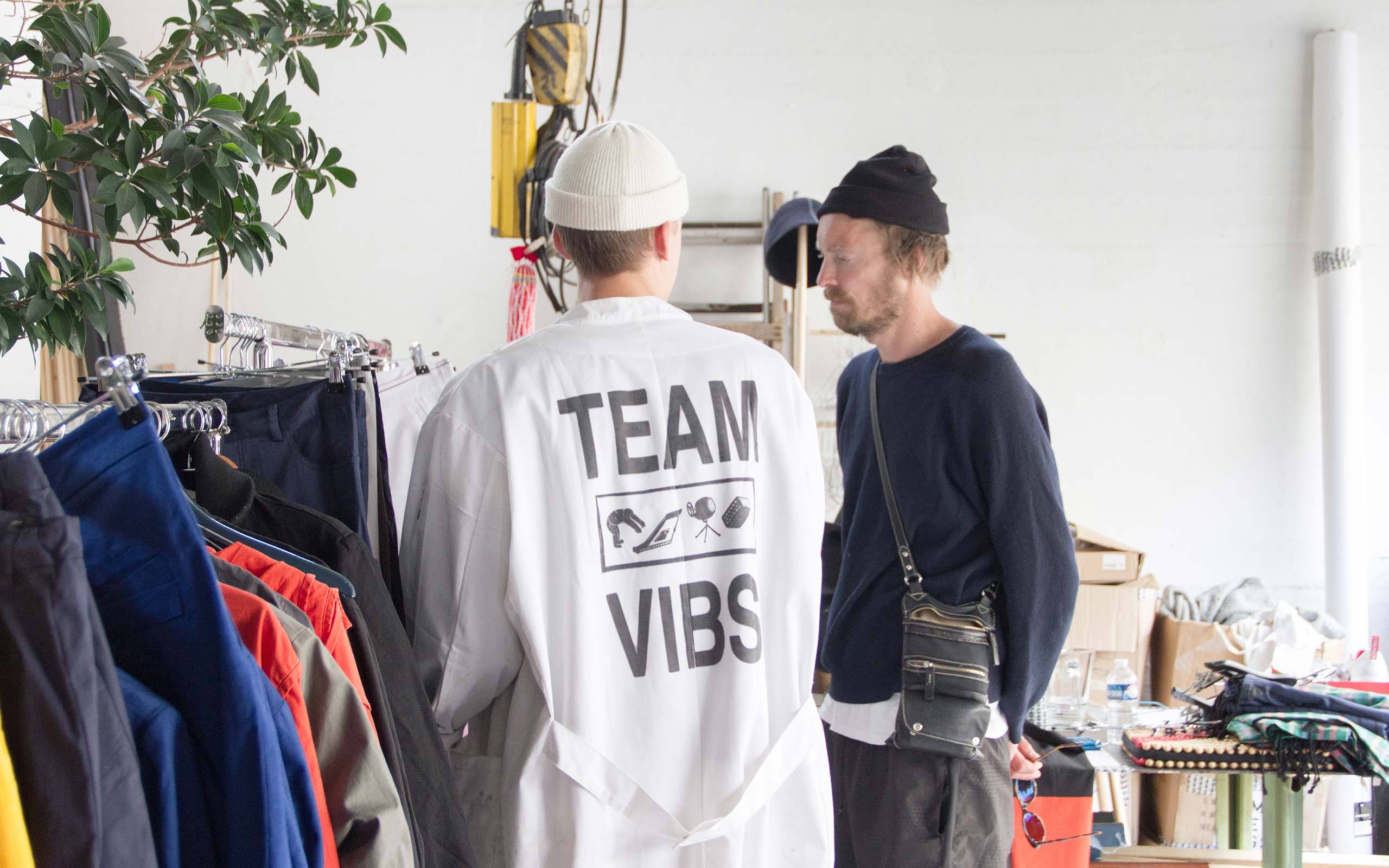
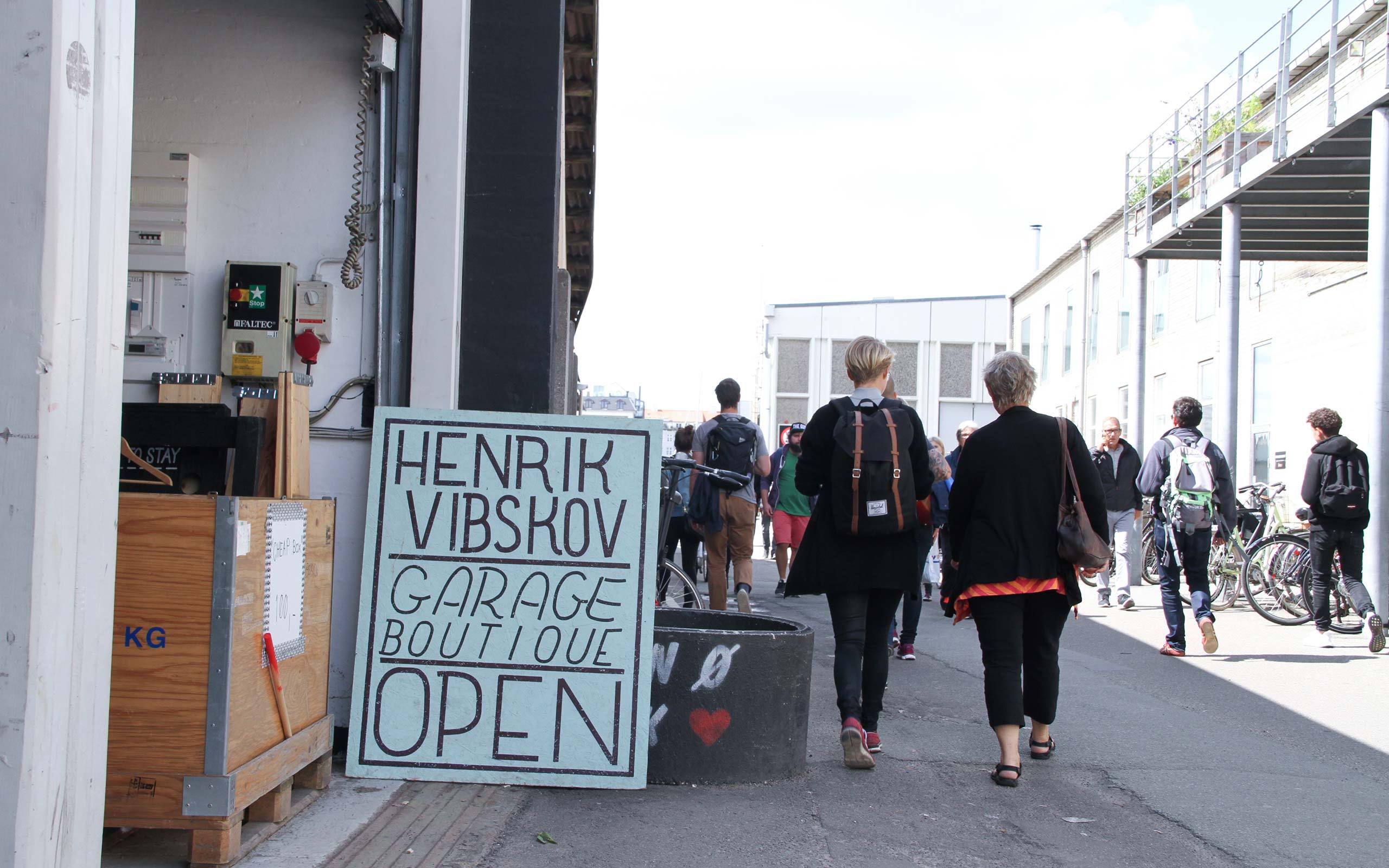
Interview: Florian Langhammer
Photos: Florian Langhammer
Links:


